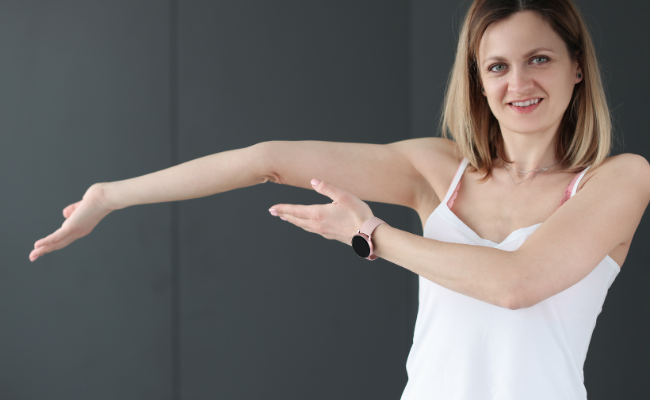How to Treat Joint Hypermobility Syndrome?
- January 29, 2024
- No Comments

What is Joint Hypermobility Syndrome?
Joint Hypermobility Syndrome (JHS) is identified as a connective tissue disorder wherein thick bands of tissue, known as ligaments, are responsible for holding joints together and preventing them from moving excessively or beyond their typical range. However, in individuals with Joint Hypermobility Syndrome, these ligaments are either loose or weak. This results in joints that exhibit a greater degree of flexibility than what is considered normal. The condition is not rare and can impact various joints such as the knees, elbows, and fingers. While increased flexibility can be advantageous in certain activities, the excessive joint mobility seen in JHS may lead to various symptoms and potential complications.
Why Does Joint Hypermobility Syndrome Occur?
JHS is primarily associated with genetic factors that affect the structure of collagen, a key protein in connective tissues. Collagen provides support and structure to various parts of the body, including joints. When there is a genetic predisposition to altered collagen, it can result in joints that are more flexible than normal.
Apart from genetics, hormonal influences can also contribute to JHS. Hormones play a crucial role in maintaining the integrity of connective tissues, and fluctuations in hormone levels may affect joint stability.
How is Joint Hypermobility Syndrome Diagnosed?
Diagnosing JHS involves a comprehensive assessment that considers both clinical and genetic factors. The Beighton Score is commonly used to evaluate joint hypermobility. This scoring system assesses flexibility in various joints, such as the fingers, thumbs, elbows, and knees. A higher Beighton Score indicates increased joint flexibility.
Additionally, medical professionals may conduct a thorough physical examination, considering symptoms such as joint pain, fatigue, and muscle weakness. Imaging studies, such as X-rays or magnetic resonance imaging (MRI), may be used to rule out other potential causes for symptoms.
Genetic testing may also be recommended to identify specific gene mutations associated with collagen abnormalities, providing a more accurate diagnosis and helping to understand the underlying causes of the condition.
Treatment Solutions for Joint Hypermobility Syndrome
Managing JHS involves a multidisciplinary approach that addresses both the symptoms and the underlying causes. While there is no cure for JHS, various treatment strategies aim to improve joint stability, alleviate symptoms, and enhance overall quality of life.
Physical Therapy:
- Physical therapy plays a central role in managing JHS. A tailored exercise program, designed by a physiotherapist, can help strengthen muscles surrounding hypermobile joints, providing better support and stability.
- Therapeutic exercises focus on improving proprioception, balance, and coordination, which are essential for individuals with joint hypermobility.
Occupational Therapy:
- Occupational therapists work with individuals to develop strategies for performing daily activities with reduced strain on hypermobile joints.
- Adaptive equipment and modifications to home and work environments may be recommended to enhance functionality and prevent joint stress.
Pain Management:
- Pain associated with JHS can be managed through a combination of medications, such as nonsteroidal anti-inflammatory drugs (NSAIDs), and physical modalities like heat and cold therapy.
- Lifestyle modifications, including pacing activities and incorporating periods of rest, are essential in preventing excessive strain on joints.
Bracing and Splinting:
Customized braces or splints may be prescribed to provide additional support to hypermobile joints, reducing the risk of injury and minimizing discomfort.
Education and Lifestyle Modification:
- Individuals with JHS benefit from education about their condition. Understanding joint limitations and learning proper body mechanics can help prevent injuries and improve overall joint health.
- Lifestyle modifications, such as maintaining a healthy weight and incorporating low-impact exercises, are crucial in managing symptoms and promoting joint well-being.
Benefits of Treating Joint Hypermobility Syndrome:
- Improved Joint Stability: By incorporating targeted exercises and physical therapy, individuals with JHS can experience increased joint stability, reducing the risk of dislocations and injuries.
- Pain Relief: Treatment strategies, including medication and physical modalities, help alleviate pain associated with JHS, enhancing overall comfort and quality of life.
- Enhanced Functionality: Occupational therapy and adaptive strategies empower individuals to perform daily activities more efficiently, promoting independence and functionality.
- Prevention of Complications: Proactive management of JHS can help prevent complications such as joint dislocations, chronic pain, and the development of secondary conditions.
- Improved Quality of Life: By addressing both the physical and emotional aspects of JHS, individuals can experience an improved quality of life. Understanding and managing the condition allows for better control over symptoms, fostering a sense of well-being.
Comments (0)